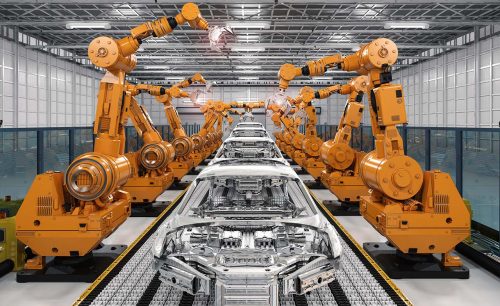 In recent years, industry 4.0 has gained prominence as the next industrial revolution. With the advent of advanced technologies like artificial intelligence (AI), machine learning, and the Internet of Things (IoT), companies have been able to achieve new levels of efficiency and productivity. One key aspect that has enabled this transformation is data-driven manufacturing.
In recent years, industry 4.0 has gained prominence as the next industrial revolution. With the advent of advanced technologies like artificial intelligence (AI), machine learning, and the Internet of Things (IoT), companies have been able to achieve new levels of efficiency and productivity. One key aspect that has enabled this transformation is data-driven manufacturing.
What is Data-Driven Manufacturing?
Data-driven manufacturing, also known as smart manufacturing or intelligent manufacturing, is the use of data and advanced technologies to optimize and automate various processes in a manufacturing setting. This involves collecting and analyzing large amounts of real-time data from different sources to make informed decisions and improve operations.
Benefits of Data-Driven Manufacturing
There are numerous benefits associated with data-driven manufacturing, including:
1. Improved Efficiency and Productivity
By utilizing real-time data, companies can identify inefficiencies in their manufacturing processes and make necessary adjustments to improve productivity. This leads to faster production times, reduced costs, and increased output.
2. Predictive Maintenance
Data-driven manufacturing allows companies to monitor equipment and machinery in real time, predicting when maintenance or repairs are needed. This helps prevent unexpected breakdowns and downtime, saving both time and money.
3. Quality Control
With data-driven manufacturing, companies can monitor the quality of their products in real time through sensors and analytics. This enables early detection of defects and allows for immediate corrective actions, ensuring higher quality products and reducing waste.
4. Enhanced Supply Chain Management
Data-driven manufacturing provides companies with real-time visibility into their supply chain, allowing for better inventory management and increased efficiency. This leads to reduced costs and improved customer satisfaction.
Challenges of Data-Driven Manufacturing
While data-driven manufacturing offers many advantages, there are also some challenges that companies may face when implementing it:
1. Cost
Implementing data-driven manufacturing requires significant investment in technology, infrastructure, and training. This can be a barrier for smaller companies or those with limited resources.
2. Data Management
With the vast amounts of data involved in data-driven manufacturing, companies need to have effective systems in place for data collection, storage, and analysis. Ensuring the accuracy and security of this data is also crucial.
3. Skills Gap
Data-driven manufacturing requires specialized skills and expertise, which may not be readily available in the workforce. Companies need to invest in training their employees or hiring new talent to successfully implement and operate data-driven processes.
How to Implement Data-Driven Manufacturing
To successfully implement data-driven manufacturing, companies should follow these steps:
1. Identify Goals and Objectives
The first step is to define the specific goals and objectives that the company wants to achieve through data-driven manufacturing. This could include improving efficiency, reducing costs, or enhancing product quality.
2. Assess Current Systems and Processes
Companies need to evaluate their current manufacturing systems and processes to identify areas where data-driven technologies can be integrated. It’s essential to understand existing workflows to determine the potential impacts and benefits of adopting new technologies.
3. Invest in IoT
Investing in IoT Edge Computing is a crucial step in the data-driven manufacturing process. By processing data on the edge of the network, closer to where it is generated, companies can reduce latency, increase speed, and improve the reliability of real-time data analytics. This is particularly important in manufacturing, where immediate responses to data can lead to significant improvements in efficiency and production quality.
4. Implement the Necessary Technologies
After identifying the goals and assessing current systems, companies should begin implementing the required data-driven technologies. This includes installing sensors, integrating IoT devices, and using AI and machine learning algorithms to process and analyze data.
5. Continuous Monitoring and Optimization
With the technologies in place, ongoing monitoring is crucial to ensure they are functioning correctly and efficiently. Companies need to establish protocols for regularly reviewing data analytics to continuously optimize manufacturing processes.
By addressing these challenges and following the above steps, companies can overcome the initial hurdles and reap the full benefits of data-driven manufacturing, ensuring that they remain competitive in the evolving landscape of Industry 4.0.
Conclusion
Data-driven manufacturing has revolutionized the way companies operate and will continue to do so in the future. By leveraging data and advanced technologies, businesses can achieve increased efficiency, reduced costs, and improved product quality. While there are challenges involved in implementing data-driven processes, the rewards far outweigh them. As we move towards a more connected and digitized world, data-driven manufacturing will become increasingly essential for companies to stay competitive and thrive in their respective industries.
So, businesses must embrace this transformation and take advantage of the many benefits it offers. Let’s move towards a smarter and more efficient future with data-driven manufacturing!






